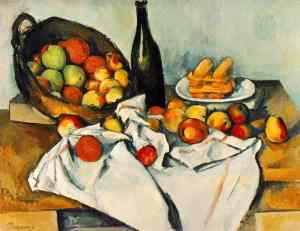While I am not ready to share all the delicious details, I will say that I am overwhelmed with the generosity and creativity that was revealed. I had recently met a photographer Ann, whose works I admired, and asked her if it was OK to introduce a writer to her latest suite of work and see what comes of it. I then contacted my friend, a brilliant young writer I had the honor of meeting years ago at a residency, and asked if she would be inspired to craft something from Ann’s new images. She was indeed interested and began her work. I told her nothing of Ann’s work or how I knew her, I simply showed her the images.
Just yesterday I opened my email, and attached was one of the most exquisite little pieces of fiction I’ve read in years. It was like listening to an amazing song – I actually re-read it several times. The work was frightening in how close it was to the intentions behind the photography, it was perfect.
In light of such an amazing writing and art experiment, I’ll share with your some excerpts from another writer who was absolutely inspired by a visual artist’s work. Rainer Maria Rilke (1875-1926), the poet and essayist spent almost 20 years of his professional life inspired by the paintings of Paul Cézanne (1839-1906). He wrote letters to Cézanne’s wife after a memorial show of the painter’s work (he had passed away the year prior). The letters are compiled in a book, called “Letters on Cézanne”. The letters serve less as an art historical review on Cézanne’s work, but simply a reflection on Rilke’s passion for how Cézanne’s art, and visual art in general, affected his experience of life and in turn his writing.
For any writer it seems vital to change gears and reflect on another creative process, especially that of the visual arts. Writing and language come easy, they are deceptive and seductive. The visual arts require another level of thinking – there are leaps that happen with color and line that the author makes with word choice and rhythm. Line and color require a leap of faith, sound and words are more precise and grounded. Rilke speaks more eloquently about it than I, though I share the sentiment completely. My work is largely inspired by writing, and my writing always inspired by art.
from Rilke’s “Letters on Cézanne” (1907):
“Somehow I too must find a way of making things; not plastic, written things, but realities that arise from the craft itself. Somehow I too must discover the smallest constituent element, the cell of my art, the tangible immaterial means of expressing everything….”
“At my age,’ he says – “I couldn’t get a woman below the age of fifty, and I know it wouldn’t be possible to find such a person in Aix.” So he uses his old drawings as models. And lays his apples on bed-covers which Madame Bremond will surely miss some day, and places a wine-bottle among them or whatever happens to be handy. And (like Van Gogh) he makes his ‘saints’ out of such things; and forces them – forces them – to be beautiful, to stand for the whole world and all joy and glory, and doesn’t know whether he has succeeded in making them do it for him.”

Paul Cézanne, Still Life with Basket of Apples (1890-94), image courtesy The Art Institute of Chicago
Tagged: collaboration, Letters on Cézanne, painting, Paul Cézanne, photography, Rainer Maria Rilke, writing“…There’s something else I wanted to say about Cézanne: that no one before him ever demonstrated so clearly the extent to which painting is something that takes place among the colors, and how one has to leave them alone completely, so that they can settle the matter among themselves. Their intercourse: the whole of the painting. Whoever meddles, arranges, injects his human deliberation, his wit, his advocacy, his intellectual agility in any way, is already disturbing and clouding their activity. Ideally a painter (and generally, an artist) should not become conscious of his insights: without taking detour through his reflective process, and incomprehensibly to himself, all his progress should enter so swiftly into the work that he is unable to recognize them in the moment of transition. Alas the artist who waits in ambush there, watching, detaining them, will find them transformed like the beautiful gold in the fairy tale which can not remain gold because some small detail was not taken care of.”

2 Comments
featsandfamines • October 7, 2013
Reblogged this on Feats and Famines and commented:
Wonderful thoughts courtesy of Catherine re: writing about art...
Would you like to share your thoughts?